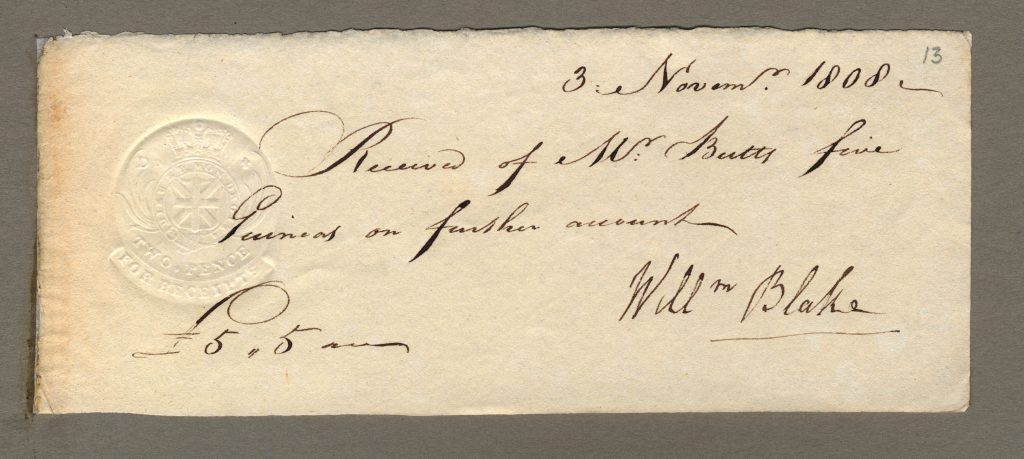The Much-Anticipated Receipts Update

The previous occasion upon which we brought to your attention the documentation of Blake’s inimitable and exciting fiscal accounts was in mid-2016, so it’s about time we revisited the manifold problems plaguing the receipts project. The project has been gathering (only a little) dust while we paid attention to more pressing questions raised by the redesign, the Four Zoas display, the marginalia schema, not to mention the terrifying experience of recording tutorial videos! But, finally, the (all new) Receipts Team – comprising the brand new BAND member Emily Tronson, the not-so-new Alex Zawacki and myself – has reconvened and we’ve been trying to compile a list of objectives to guide our attempts to prepare a single, complete BAD with all the receipts in our possession. Here are some (hopefully) interesting thoughts and considerations we’ve come up with:
Continue reading
